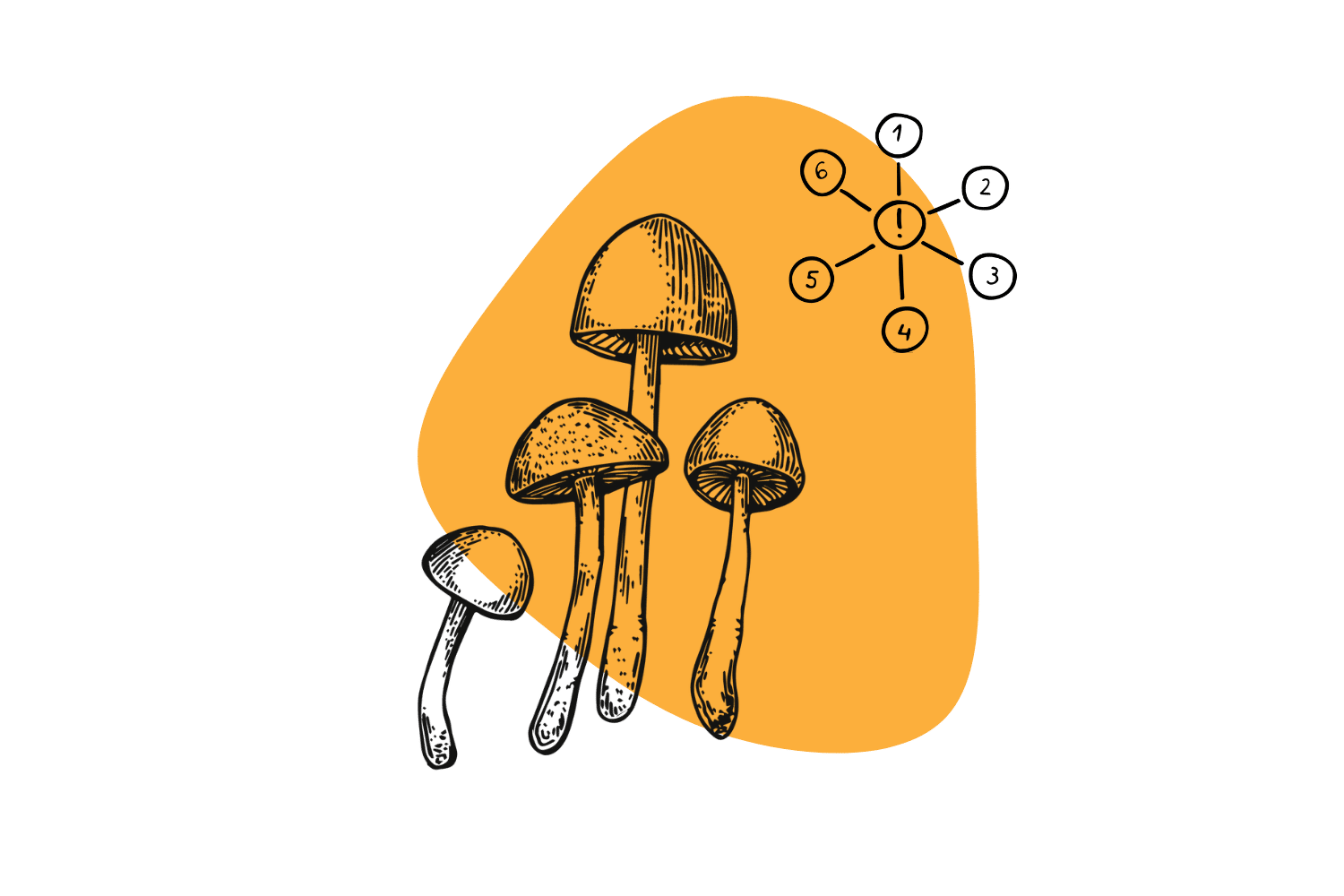
Where to buy magic mushroom in Sydney. By far, the most common magic mushroom species is Psilocybe cubensis. Within this species, there are hundreds of unique strain options to choose from. Where to buy magic mushroom in Sydney.
Picking what strain to order when growing magic mushrooms at home can be a bit overwhelming. Where to buy magic mushroom in Sydney.
This article will clear the air when it comes to different Psilocybe cubensis mushroom strains.
We’ll cover how to choose for the most potent, review the best strains for beginners, and provide explanations for over 100 magic mushroom strains you’ll likely run into on the marketplace. Where to buy magic mushroom in Sydney.
Where to Buy Magic Mushroom Spores
Magic mushroom spores are legal to buy in most U.S. states and Canada, most of Europe, and Central and South America. It’s only once the spores are germinated that they become illegal. Hence the reason why most spore vendors sell samples “for microscopic use only.”
Where to buy magic mushroom in Sydney. we sell magic mushrooms, LSD, DMT, Crystal meth, Ayahuasca, MDMA, Ketamine, as well as medicinal and gourmet mushroom spores.
This company ships worldwide and offer an enticing insurance policy for all orders.
If your order is stopped for any reason, We will ship another identical order free of charge.100% of international orders make it to their final destination. Are Psychedelics Legal in Australia?.
What is a Magic Mushroom Strain?
A strain is different from a species.
A species refers to a distinct genetic grouping of organisms that can reproduce together.
A strain is a subgrouping that refers to a specific phenotype or morphology within a species.
In other words, all species are genetically distinct. Strains within a species have the same genetic code, but some genes are more active than others — which produces slight differences in how they look or feel.
Let’s look at humans as an example: Someone of African descent (strain or race) can reproduce just as easily with someone of Caucasian descent. They’re considered a different race (strain) but can still reproduce because they’re the same species (Homo sapiens).
The same is true for mushrooms. Within the Psilocybe cubensis species, there are hundreds of different strains, each one with slight differences in how they grow. But all strains within this species can breed together.
Conversely, strains of Psilocybe cubensis can’t breed with strains of Panaeolus cyanescens because they’re genetically distinct from one another.
There are six key differences that make strains unique:
- Mushroom size — some strains have a higher affinity for growing into monster mushrooms; others are more likely to produce smaller, stubby mushrooms instead.
- Cap color — the color of mushroom caps can range from white (albinos) to tan to dark brown or black.
- Gill production — some strains, like Penis Envy, barely produce any exposed gills at all.
- Flush vitality — most strains will survive long enough for around 3 or 4 flushes, but some have the vitality to continue pushing out mushrooms for ten flushes or more.
- Colonization speed — the colonization time will vary slightly, but some strains will fully colonize spawn jars up to 20% faster.
- Resistance to infection — contamination is the biggest cause of failure when growing magic mushrooms. Some strains are more susceptible to mold and bacteria than others.
Why Strain Selection Isn’t As Important As You Might Think
There’s a lot of debate surrounding whether psilocybin strains mean much of anything beyond the physical appearance of the mushroom.
All magic mushroom strains contain three active ingredients — psilocybin, psilocin, and baeocystin. All the strains listed below are active at roughly the same dose, and the qualitative effects are virtually identical.
Lots of strain vendors will list certain qualitative effects with a given strain. Some are suggested to be more euphoric, more visually psychedelic, or more introspective.
This isn’t exactly true. The strain of mushroom you choose has little to no direct impact on the experience. Your mindset going into the trip greatly impacts your qualitative experience from taking magic mushrooms — not the strain.
The bottom line is that all strains are going to provide more or less the same experience. The core difference from one strain to another is the growth habits of the mushrooms themselves.
You can’t really go wrong when selecting a strain so go with whatever one’s sounds the most interesting to you.
There are some exceptions here. For example, if you’re growing on B.R.F. cakes, you should opt for a strain that doesn’t produce extremely large mushrooms. If the shrooms are too large, it could complicate the process by having to prop each of the cakes up, so they don’t keep falling over.
Additionally, depending on the climate conditions where you live, you may want to go with a more cold-tolerant or heat-tolerant strain.
For most people, the best strain is simply the one that sounds the most interesting to you. I encourage you to try many different strains and find one that works best for you. Sometimes the strains I think are going to be the best yield very poorly, and the ones I’ve tried on a random whim ended up being the best producers.
Magic Mushroom Strain Profiles
There are more strains of magic mushrooms than any single resource could cover.
New strains are collected from the wild all the time, and even more are “developed” in a mycology lab.
Some people create hybrids by mixing two or more strains together; others isolate specific growth habits from existing strains using agar plates.
Here, we’ll cover over 100 of the most common strains available online. Many more undocumented strains are circulating in closed spore trading circles, mycological societies, or private labs. You can also collect your own wild strains by harvesting samples from the wild.

A-Strain
| Potency | Above Average |
| Cultivation | Easy |
| Species | Psilocybe cubensis |
| Cost | $ |
| Sold By | Ralphsters Spores |
The A strain (sometimes called A+) was developed by Mr. G — an infamous mushroom breeder and Shroomery user. He’s also credited with the B+ strain.
You can also find an albino version of the A strain.
This strain is known for its large mushrooms with a pale yellow cap and heavy spore production.

Acadian Coast
| Potency | Average |
| Cultivation | Intermediate |
| Species | Psilocybe cubensis |
| Cost | $$ |
| Sold By | Ralphsters Spores |
The Acadian Coast strain is hard to find, and there’s a lot of conflicting information about its origins. It’s thought to be a naturalized species found on the East Coast of North America, spanning from Newfoundland to Louisiana.
This strain has nice thick, tan-colored caps and produces fairly prolific flushes, especially in the second and third flush.

Albino A+
| Potency | Potent |
| Cultivation | Easy |
| Species | Psilocybe cubensis |
| Cost | $ |
| Sold By | Ralphsters Spores, Sporeworks, & Sporeslab |
The Albino A strain is the isolated genetics of a pale white version of the classic A strain. This is not a true albino because the spores still carry the dark purple or black color. Albinos have no pigment in the flesh or spores.
Albino A shares the same infamous large fruiting bodies, cap shape, and thick spore production as its parent genetics.

Albino Penis Envy
| Potency | Potent |
| Cultivation | Intermediate |
| Species | Psilocybe cubensis |
| Cost | $$ |
| Sold By | Sporeworks & Sporeslab |
Albino Penis Envy is the non-pigmented version of Penis Envy. It was developed by Workman at Sporeworks.
This strain is just as potent as the conventional Penis Envy mushroom and produces prolific flushes. The only trade-off is that this strain is much more prone to aborts than the original strain, so this is considered an intermediate-level strain for home growers.

Albino Treasure Coast
| Potency | Average |
| Cultivation | Intermediate |
| Species | Psilocybe cubensis |
| Cost | $ |
| Sold By | Sporeslab |
The Albino Treasure Coast mushroom is an albino mutation of the classic Treasure Coast strain — originally harvested from the Southern Florida Gulf Coast.
It’s unclear whether Mr. G developed this strain himself or if he just liked it. Still, he’s often cited in various online mushroom growing communities posting really beautiful flushes with this strain.
The only company currently selling this strain is Sporeslab which managed to score it from a local mushroom grower in B.C.

Alcabenzi
| Potency | Above Average |
| Cultivation | Easy |
| Species | Psilocybe cubensis |
| Cost | $$ |
| Sold By | Not Currently Available |
This strain is thought to be a cross between Psilocybe cubensis (Golden Teachers) and Psilocybe mexicana — however, this is hotly debated. Many mycologists argue this cross isn’t possible.
This strain is an aggressive colonizer and highly resistant to infection and mold. It’s an O.G. in the mushroom cultivation space and was one of the most popular strains in the early 2000s.

Allen Strain
| Potency | Average |
| Cultivation | Easy |
| Species | Psilocybe cubensis |
| Cost | $ |
| Sold By | Ralphsters Spores & Spores 101 |
This is one of the many strains discovered by Mushroom John Allen on his trip to Southeast Asia. This particular strain was found in Thailand, near Ban Tailing Ngam, Koh Samui.
The Allen strain is well-loved in the mushroom community. Its characteristics are thin, tall mushrooms with rapid colonization times. This strain will colonize jars about 10 or 20% faster than many other Psilocybe cubensis strains.
Amazon
| Potency | Average |
| Cultivation | Easy |
| Species | Psilocybe cubensis |
| Cost | $ |
| Sold By | Ralphsters Spores, Spores 101, & Sporeslab |
The Amazon strain was originally sold as “P.E.S. Amazonia.” P.E.S. stands for Pacifica Exotica Spora — the company that first started selling the spores for this strain.
It was trendy for a while to name a newly discovered strain after the company that “discovered” them, but this isn’t a common practice anymore. Now there are plenty of other vendors that sell the Amazon strain simply as “Amazon” or “Amazonian Cubensis”.
Amazon is a very large mushroom strain and grows surprisingly quickly for its size. Part of the reason they can grow so large so quickly is the fact that this strain has hollow stems. They shrink quite a bit when you dry them out.
Sporeworks mislabelled this strain for a while as B+, which has created a lot of confusion around the P.E.S. Amazonia and B+ strains ever since.

Argentina
| Potency | Average |
| Cultivation | Easy |
| Species | Psilocybe cubensis |
| Cost | $ |
| Sold By | Ralphsters Spores |
This strain was (unsurprisingly) discovered in the mountainous rainforests of Argentina.
The mushrooms of the Argentinian strain are smaller than average, but it’s reportedly capable of producing up to 10 flushes before losing vitality and molding. It’s also more resistant in regions with high humidity and cooler weather.

Australian
| Potency | Potent |
| Cultivation | Intermediate |
| Species | Psilocybe cubensis |
| Cost | $ |
| Sold By | Ralphsters Spores |
This strain is sometimes called “the aussie” or “gold tops” in Australia.
As you can imagine, this strain was first collected in pastures around Australia (no specific region identified).
The Australian cubensis strain is a classic golden top mushroom with large fruits, rapid colonization, and relatively strong resistance to mold and bacteria. This is an excellent strain for beginners.

Aztec God
| Potency | Above Average |
| Cultivation | Intermediate |
| Species | Psilocybe cubensis |
| Cost | $ |
| Sold By | Sporeslab |
This strain comes from Central America. Its name comes from the Aztec tribes that used these mushrooms several hundred years ago.
Aztec God shrooms are medium-sized with a light brown or chestnut-colored cap.
This is a good intermediate species to consider for people who want something a little different.

B+
| Potency | Above Average |
| Cultivation | Easy |
| Species | Psilocybe cubensis |
| Cost | $ |
| Sold By | Ralphsters Spores, Sporeworks, & Sporeslab |
This is a classic strain invented by the legendary Mr. G, who claims it’s a hybrid between Psilocybe cubensis and Psilocybe azurescens (hotly debated). It’s unlikely these two species are able to produce viable offspring, but there are some features that appear to resemble aspects of both species — so it’s entirely possible.
Either way, B+ is an excellent strain for beginners because of how resistant it is to cool weather and contamination.
This strain is slower growing than most, but the increased defense against infection and unoptimized growing conditions is worth waiting a few extra days.
This strain is known for producing particularly large mushrooms.
The B+ strain was once awarded for being “The Shroomery’s most popular cube”.
Ban Hua Thanon
| Potency | Average |
| Cultivation | Easy |
| Species | Psilocybe cubensis |
| Cost | $ |
| Sold By | Not Currently Available |
Ban Hua Thanon is more commonly referred to in the mushroom community as BHT (mushroomers love their acronyms).
The original sample was collected by Mushroom John Allen on a tour through Southeast Asia in the 90s as he collected new strains of Psilocybe cubensis.
This strain is noted for having strong resistance to high temperatures.
Ban Phang Ka
| Potency | Average |
| Cultivation | Intermediate |
| Species | Psilocybe cubensis |
| Cost | $$ |
| Sold By | Ralphsters Spores |
Ban Phang Ka (B.P.K.) was discovered in Thailand by Mushroom John Allen.
This strain is noted for its large mushrooms, but not much else is known about this strain. It’s hard to find spores for this strain from the major suppliers.

Ban Thurian
| Potency | Average |
| Cultivation | Easy |
| Species | Psilocybe cubensis |
| Cost | $ |
| Sold By | Ralphsters Spores |
Ban Thurian (B.T.) is a standard Thai strain brought to us by Mushroom John Allen. It’s moderate in all categories — colonization speed, disease resistance, and mushroom size.

Bix Mex
| Potency | Average |
| Cultivation | Easy |
| Species | Psilocybe cubensis |
| Cost | $ |
| Sold By | Not currently available |
This strain is an isolation of the Mexican Cubensis strain (one of the O.G. strains still available today).
There’s a lot of confusion around this strain, with many vendors calling it Psilocybe cubensis Mexicana — but there is an important distinction between this Mexican cubensis strain and Psilocybe Mexicana — which is another species of psychedelic mushrooms altogether.
Bix Mex is a genetic isolation of another Psilocybe cubensis strain collected in Mexico but does not share the same growth characteristics as Psilocybe Mexicana (which is a much smaller and spindlier mushroom).
The Bix Mex isolate produces characteristic flat caps with a light-colored ring around the edges. They’re very photogenic mushrooms but be careful not to wait too long — this strain is a heavy sporulator. Once the veils break, these mushrooms throw thick black mounds of spores all over the place in just a few short hours.
Unfortunately, it’s hard to find Bix Mex mushrooms — but if you do, I highly recommend giving this strain a try.

Blue Meanies
| Potency | Above Average |
| Cultivation | Easy |
| Species | Psilocybe cubensis |
| Cost | $$ |
| Sold By | Ralphsters Spores & Sporeslab |
“Blue Meanies” is also the nickname for another species of magic mushroom, Panaeolus cyanescens, which has led to a ton of confusion around this strain.
The name for this strain comes from the distinct blue coloration that forms around the caps and stems when touched or grazed. This discoloration is present in all psilocybin-containing mushrooms but is more noticeable in larger and light-colored strains such as this.
The original stock for this mushroom strain is reported to come from Australia, and the appearance of these mushrooms is very similar to the Australian strain.

Brazilian
| Potency | Potent |
| Cultivation | Easy |
| Species | Psilocybe cubensis |
| Cost | $ |
| Sold By | Ralphsters Spores, Spores 101 |
The Brazilian strain is known for its aggressive colonization and large mushrooms.
In the wild, these mushrooms can easily grow larger than 18 inches, but in cultivation, the fruiting is much smaller.

Burma
| Potency | Above Average |
| Cultivation | Easy |
| Species | Psilocybe cubensis |
| Cost | $ |
| Sold By | Sporeworks, Sporeslab |
This is a classic high-potency strain from Southeast Asia.
The original sample was collected from outside Yangoon, Burma (now Myanmar). It was reportedly collected by a Thai student who gifted a sample to Mushroom John Allen, who then propagated the spores throughout the mushroom community.
You can find these spores from just about any of the major suppliers — sometimes carried under the name “Burmese strain”.

Cambodian
| Potency | Above Average |
| Cultivation | Easy |
| Species | Psilocybe cubensis |
| Cost | $ |
| Sold By | Ralphsters Spores |
The Cambodian cubensis strain is popular because it’s to grow and produces notoriously dense flushes. This strain is highly resistant to unoptimized growing conditions and
contamination.
Mushroom John Allen collected the original sample for this strain near the ancient temple of Angkor Wat in Cambodia.

Campinas
| Potency | Above Average |
| Cultivation | Intermediate |
| Species | Psilocybe cubensis |
| Cost | $$ |
| Sold By | Ralphsters Spores |
This strain is very rare — the only place selling it at the moment is Ralphsters Spores.
The original sample was taken in Campinas, Sao Paulo, Brazil. It was then genetically stabilized through several generations of inbreeding before it came onto the market in the mid-2010s.

Chilean
| Potency | Average |
| Cultivation | Easy |
| Species | Psilocybe cubensis |
| Cost | $$ |
| Sold By | Not currently available |
The Chilean strain is noted for growing in a wide range of altitudes and climates. This means it’s most likely going to be more tolerant to unoptimized growing conditions than other strains.
The mushrooms produced from this strain closely resemble the large, lightly-colored specimens in the Amazon strain — but rarely reach the same monstrous sizes.
This strain is difficult to find.

Chitwan (Nepal)
| Potency | Above Average |
| Cultivation | Intermediate |
| Species | Psilocybe cubensis |
| Cost | $$ |
| Sold By | Spores 101 |
This strain comes from the high mountains of Nepal in the Chitwan region. John Allen collected this strain on his trip to Southeast Asia, and it’s been slowly circulating in spore trading communities ever since.
It’s only recently that this strain has made its debut onto some of the larger spore vendors, and it’s a welcome addition.
This strain is very well-balanced — the mushrooms are medium-sized, flushes are dense, and it’s reasonably resistant to contamination.

Colorado
| Potency | Above Average |
| Cultivation | Easy |
| Species | Psilocybe cubensis |
| Cost | $$ |
| Sold By | Not currently available |
The climate in Colorado is not well-suited for Psilocybe cubensis — so it’s unlikely this strain really came from the mountainous region of Colorado, as some vendors claim.
However, it isn’t impossible, and there have been rumors of psilocybe species growing here during the summer.
The true origins of this strain remain a mystery, but it’s a popular strain for its strong resistance to infection.
Corumba
| Potency | Average |
| Cultivation | Intermediate |
| Species | Psilocybe cubensis |
| Cost | $$ |
| Sold By | Ralphsters Spores |
This strain was collected by an amateur mycologist in the Brazilian city of Corumbá. The original collector was unable to germinate the spores and ended up sending it off to a local mycological society, where it was successfully propagated.
Several years later, this strain is now available on several large vendor sites.
This strain can be a little bit tricky, so it’s recommended for intermediate or expert growers who want something a little more challenging to try.

Costa Rican
| Potency | Above Average |
| Cultivation | Easy |
| Species | Psilocybe cubensis |
| Cost | $ |
| Sold By | Ralphsters Spores & Sporeworks |
This strain was reportedly discovered by Rhino, a frequent Shroomery user who entered the spores into widespread circulation. The sample was supposedly collected at the famous Arenal volcano in Costa Rica.
You can now buy Costa Rican cubensis spores from just about any of the major spore vendors.

Creepers
| Potency | Potent |
| Cultivation | Easy |
| Species | Psilocybe cubensis |
| Cost | $ |
| Sold By | Ralphsters Spores & Spores 101 |
This strain was isolated from the Cambodian strain and first sold under the Keeper brand as “Keeper’s Creepers.”
The original Keeper’s Creeper was overpriced for being an isolate from an already popular strain. However, several vendors now carry this strain, and the price has settled back down to Earth. Most vendors simply call this strain “Creeper.”
Creepers are known for producing very large mushrooms.

Cuban
| Potency | Above Average |
| Cultivation | Easy |
| Species | Psilocybe cubensis |
| Cost | $ |
| Sold By | Ralphsters Spores |
The cubensis in Psilocybe cubensis literally translates to “coming from Cuba.”
This strain was first discovered in 1904 by Franklin Sumner Earle — an American mycologist who spent a lot of time studying mushrooms in Cuba, where he eventually died. Originally, Earle categorized his finding as a species under the Stropharia genus, but it’s since been removed and is now considered a strain of Psilocybe cubensis.
You can find Cuban cubensis spores from most spore vendors.
Dixieland
| Potency | Above Average |
| Cultivation | Easy |
| Species | Psilocybe cubensis |
| Cost | $ |
| Sold By | Ralphsters Spores |
Dixieland is a nickname for the Southern United States. The original sample was reportedly collected from somewhere in Mississippi.
These mushrooms have a medium-sized bulbous cap and long thin stems.

Ecuador
| Potency | Above Average |
| Cultivation | Easy |
| Species | Psilocybe cubensis |
| Cost | $ |
| Sold By | Ralphsters Spores, Sporeworks, Spores 101 |
The first sample of this strain was collected in the mountains of Ecuador by B.I.O. more than 30 years ago.
This strain is a slow colonizer but produces nice large mushrooms with high potency. The mycelium is also more tolerant to unoptimized growing conditions, which makes it an excellent choice for beginners.

Enigma
| Potency | Above Average |
| Cultivation | Easy |
| Species | Psilocybe cubensis |
| Cost | $$ |
| Sold By | Sporeslab |
Enigma doesn’t produce mushrooms. Instead, it forms thick truffle-like growths with exceptionally high psilocybin and psilocin concentrations.
This strain is a winner of the Psilocybin Cup held in Oakland, California, and there are several off-shoots of this strain that are becoming popular options as well.
This is a great strain if you prefer growing magic truffles and want something different. It’s important to note that this is not a true magic truffle but has truffle-like qualities.
This strain takes a long time to form the psilocybin-rich masses, sometimes up to 4 months. The longer you let them grow, the more potent they become.
Escondido
| Potency | Average |
| Cultivation | Easy |
| Species | Psilocybe cubensis |
| Cost | $$ |
| Sold By | Ralphsters Spores |
Escondido is a new strain collected from the Puerto Escondido area of southern Mexico. Not much is known about this strain, but it’s already recognized for its prolific flushes and climate tolerability.
F+ (Florida)
| Potency | Potent |
| Cultivation | Easy |
| Species | Psilocybe cubensis |
| Cost | $ |
| Sold By | Ralphsters Spores, Spores 101 |
This strain is sometimes called “F+,” sometimes “Florida Strain,” or simply “F-Strain.”
Despite how easy this strain is to grown and how potent the mushrooms are, it’s not that popular. Ralphsters Spores lists this as one of the top ten strains of all time, but mentions of this strain by amateur growers is sparse.
It could be that the name “F+” is off-putting to growers. F+ usually has a negative connotation, so it could be that growers skip over this strain when shopping for new strains to try. Most people don’t want to waste their time with strains that aren’t considered “the best” in one category or another.
Fatass
| Potency | Above Average |
| Cultivation | Intermediate |
| Species | Psilocybe cubensis |
| Cost | $ |
| Sold By | Ralphsters Spores |
Fatass is a term used by mushroom cultivators to describe shrooms that have a short but fat stem and a small cap size.
As you can imagine, that’s exactly what this strain is most likely to produce.
The short and fat nature of these shrooms means they can be very dense. You won’t see much size reduction when it comes to dry these shrooms, and they can be pretty potent.
Golden Emperor
| Potency | Above Average |
| Cultivation | Easy |
| Species | Psilocybe cubensis |
| Cost | $$ |
| Sold By | Sporeslab |
Golden Emperor is a genetic isolation of the infamous Golden Teacher strain by Sporeslab.
This is a good option to try out if you’re a fan of Golden Teacher mushrooms and want something different.
This strain produces mushrooms that are slightly larger than Golden Teachers while providing the same euphoric and insightful experiences that make Golden Teachers so popular.
Golden Teacher
| Potency | Above Average |
| Cultivation | Easy |
| Species | Psilocybe cubensis |
| Cost | $ |
| Sold By | Ralphsters Spores, Sporeworks, Spores 101 |
Golden Teachers are one of the most common mushroom strains on the market and an excellent option for beginner mushroom cultivators because of their tolerance to unoptimized growing environments.
The origins of this strain remain a mystery, but experts believe it was originally picked from somewhere in the Gulf region of the United States. This strain has been circulating around since at least the 1980s.
This is a very well-rounded strain. It grows quickly, produces dense flushes, and carries average to high strength for a cubensis.
Appearance-wise, these mushrooms are about as average as Psilocybe cubensis gets.
Guadalajara
| Potency | Above Average |
| Cultivation | Intermediate |
| Species | Psilocybe cubensis |
| Cost | $$ |
| Sold By | Ralphsters Spores |
This strain is distinguished by its dark pinhead mushrooms that form into light golden-colored caps as they mature.
The flushes on this strain are very prolific but are more prone to molding. This is considered an intermediate-level strain for those who have a strong understanding of how to keep a growing medium clean — especially past the second or third flush.
Gulf Coast
| Potency | Average |
| Cultivation | Easy |
| Species | Psilocybe cubensis |
| Cost | $ |
| Sold By | Ralphsters Spores, Spores 101 |
This strain is noted for being a heavy producer and makes some decent-sized mushrooms even when the growing environment isn’t optimized.
Most vendors selling this strain suggest cold shocking as a necessity for this strain — but that’s something you should be doing for just about any strain if you want to optimize production anyway.
Hanoi
| Potency | Above Average |
| Cultivation | Easy |
| Species | Psilocybe cubensis |
| Cost | $ |
| Sold By | Spores 101 |
The Hanoi strain was identified in the 90s by Mushroom John Allen while he was visiting Vietnam.
This strain is easy to grow and has relatively high potency for a cubensis strain.
Hawaiian
| Potency | Average |
| Cultivation | Easy |
| Species | Psilocybe cubensis |
| Cost | $ |
| Sold By | Ralphsters Spores, Sporeworks, Spores 101 |
There are a few strains in circulation marked “Hawaiian,” — and it isn’t clear if these are the same strain or not. Some have large dark caps, others tan-colored caps with white edges.
The first Hawaiian strain was the P.E.S. Hawaiian. P.E.S. stands for Plantasia Exotica Speciosa — a spore vendor based out of Honolulu.
Some experts suggest Hawaii isn’t an ideal location for magic mushrooms, and this strain must have come from somewhere else, but I beg to differ. There are several species of magic mushrooms, including Psilocybe cubensis, that have been discovered growing on the tropical islands of Hawaii.
I don’t recommend this strain if you care about the history and origins of the mushrooms you’re growing.
Huautla (Oaxaca)
| Potency | Potent |
| Cultivation | Easy |
| Species | Psilocybe cubensis |
| Cost | $$ |
| Sold By | Ralphsters Spores, Sporeworks, Spores 101 |
This strain was collected somewhere near Huautla de Jimenez.
This is the hometown of the legendary mushroom shaman Maria Sabina who first introduced magic mushrooms to R. Gordon Wasson in the 1950s.
This strain is fairly new but has become quite popular in the mushroom community for its reliability, dense cluster formation, and relative potency.
Jedi Mind Fuck
| Potency | Very Potent |
| Cultivation | Intermediate |
| Species | Psilocybe cubensis |
| Cost | $$ |
| Sold By | Sporeslab |
The origin of this strain is unknown, but it’s thought to have been a genetic off-shoot from the Z-strain.
While there’s a lot of debate around the qualitative experience different strains can or can’t produce, this one is often regarded for its strong, long-lasting hallucinations that almost resemble the effects of deliriants.
Kathmandu (Nepal)
| Potency | Above Average |
| Cultivation | Easy |
| Species | Psilocybe cubensis |
| Cost | $ |
| Sold By | Ralphsters Spores |
Kathmandu is the capital city of Nepal. It’s unclear who collected the first specimen. Some suggest it was one of several specimens collected by John Allen, but he only mentioned one Nepalese strain.
Wherever it came from, this is a great first strain for new growers because of how well-rounded it is. The Kathmandu mushroom strain doesn’t excel in any one category but offers a good balance of fast colonization, resistance to contamination, medium to large mushrooms size, and ease of germination and spore collection.
Koh Samui
| Potency | Potent |
| Cultivation | Easy |
| Species | Psilocybe cubensis |
| Cost | $ |
| Sold By | Spores 101 |
Koh Samui mushrooms is one of the most popular strains for beginner growers. It has a high resistance to contamination and produces several dense flushes before eventually succumbing to mold.
This strain is best known for its production of “fatasses” — which is a slang word referring to mushrooms that are short and have a fat stem.
Koh Samui was first collected by good ol’ Mushroom John Allen in the town of Hua Thanon on the island of Koh Samui.
La Primavera
| Potency | Potent |
| Cultivation | Intermediate |
| Species | Psilocybe cubensis |
| Cost | $$ |
| Sold By | Ralphsters Spores |
La Primavera is a large painting done by the Italian Renaissance painter Sandro Botticelli.
It’s unclear what the correlation is with this strain or who to give credit for developing it. Either way, this is a decent strain to try if you’re looking for something new.
Flushes continue well into the fifth or sixth round, and the mushrooms have respectable potency levels even without adding tryptophan to the growing medium.
Lipa Yai (Thai)
| Potency | Average |
| Cultivation | Easy |
| Species | Psilocybe cubensis |
| Cost | $ |
| Sold By | Ralphsters Spores, Spores 101 |
This is another strain from Thailand. It closely resembles the Koh Samui strain, with one major difference. Instead of producing short mushrooms, Lipa Yai produces tall fruiting bodies. The color and spores are very similar, albeit a tad darker.
This strain is heralded for having the same disease resistance as Koh Samui (a quality that makes Koh Samui one of the most popular beginner strains).
Lizard King
| Potency | Above Average |
| Cultivation | Intermediate |
| Species | Psilocybe cubensis |
| Cost | $ |
| Sold By | Ralphsters Spores, Spores 101 |
This strain is named after the (amateur?) mycologist that discovered it — an anonymous mycologist using the online handle “Lizard King.” They’re well-known in the mushroom growing community.
This strain is reported to have been collected in Mexico and was noted to have been growing on wood (which is strange for a Psilocybe cubensis).
Malabar India
| Potency | Potent |
| Cultivation | Easy |
| Species | Psilocybe cubensis |
| Cost | $ |
| Sold By | Ralphsters Spores, Sporeworks, Spores 101, Sporeslab |
Malabar cubensis can be hard to find but is worth searching for if your goal is producing particularly large mushrooms.
There are reports on Reddit of samples of this strain weighing more than 250 grams fresh.
A distinguishing feature of this strain is the veils that remain connected to the cap even after the mushroom is matured.
Malaysian
| Potency | Above Average |
| Cultivation | Easy |
| Species | Psilocybe cubensis |
| Cost | $ |
| Sold By | Ralphsters Spores |
The Malaysian strain (sometimes called Malay) is unstable and will continue to mutate. Every batch is different from the last.
This strain, like many on this list, was originally collected by Mushroom John Allen on his infamous trip to Southeast Asia.
Matias Romero
| Potency | Average |
| Cultivation | Intermediate |
| Species | Psilocybe cubensis |
| Cost | $ |
| Sold By | Ralphsters Spores |
This strain was collected in the Mexican village, Matias Romero. It’s noted for its thick, watery stems and caps. This strain will tolerate higher humidity levels than other strains. If the ambient air is too dry, it’s prone to aborts — which increases the chances of contamination later on.
The Matias Romera mushroom is considered an intermediate strain. It’s well worth it if you’re looking for something a little different. This is a very photogenic strain.
Mazatapec
| Potency | Above Average |
| Cultivation | Easy |
| Species | Psilocybe cubensis |
| Cost | $$ |
| Sold By | Ralphsters Spores, Sporeworks, Spores 101 |
This is one of the first magic mushroom strains to be brought to the west, along with Huautla and some of the original stock that Dennis and Terence McKenna collected when they visited the Amazon for the first time.
This strain was collected from the mountainous region of Mazatapec, Mexico.
Distinguishing features of this strain are round, bulbous caps and long stems.
Melmac
| Potency | Very Potent |
| Cultivation | Easy |
| Species | Psilocybe cubensis |
| Cost | $$ |
| Sold By | Sporeslab |
The true origins of Melmac is unclear, but many believe it to be a direct off-shoot from the infamous Penis Envy strain. Other theories suggest Penis Envy either came from Melmac, or both P.E. and Melmac came from the same source Amazon stock Terence and Dennis McKenna brought back with them on their expedition.
Either way, expect very similar growth patterns and potency from this mushroom as you would with Penis Envy. Some growers even claim this strain carries all the benefits of P.E. but offers even faster colonization.
Menace
| Potency | Above Average |
| Cultivation | Easy |
| Species | Psilocybe cubensis |
| Cost | $ |
| Sold By | Sporeworks |
P. Menace (Psilocybe Menace) is a well-known member of the mushroom community — especially on the Shroomery forums.
This strain is named after and collected by the one and only P. Menace in pastures just outside of Houston, Texas.
These shrooms have a nice cinnamon brown color with distinct cap edges. It produces a deep blue bruising reaction when touched — which is an indicator of how potent this mushroom is.
Mestizo
| Potency | Above Average |
| Cultivation | Easy |
| Species | Psilocybe cubensis |
| Cost | $ |
| Sold By | Ralphsters Spores, Spores 101 |
This strain is noted for being prolific in the first and second flush — which makes it great for beginners.
Mushrooms can continue flushing several times, but only if the environmental conditions are right and contamination is kept at bay. For newbies, it can be difficult to extend a grow beyond the second or third flush, so getting as much as possible in the first couple of rounds pays dividends quickly.
Mexican Albino
| Potency | Above Average |
| Cultivation | Easy |
| Species | Psilocybe cubensis |
| Cost | $$ |
| Sold By | Not currently available |
This strain isn’t always a true albino strain, but it’s relatively easy to isolate albino genetics using agar plates. Even the non-albino
The Mexican strain used to originate this stock was discovered by Mushroom John Allen. It’s unclear if John Allen also isolated the albino genetics or if someone else is owed credit for this discovery.
Either way, this is an excellent strain for beginners interested in growing a (nearly) albino strain.
Mexicube
| Potency | Average |
| Cultivation | Easy |
| Species | Psilocybe cubensis |
| Cost | $ |
| Sold By | Ralphsters Spores, Spores 101, Sporeslab |
This strain produces mushrooms with uniquely spotted caps. They have a nice yellow or golden color and thick stems.
You’ll find Mexicube produces plenty of dense clusters of small to medium-sized mushrooms. They aren’t particularly large but form really thick clusters that make harvesting quite an event.
Mississippi
| Potency | Average |
| Cultivation | Easy |
| Species | Psilocybe cubensis |
| Cost | $ |
| Sold By | Ralphsters Spores |
This strain comes from the same general region as the Dixieland strain. Unsurprisingly, there’s a decent amount of overlap between the growth patterns of these two strains.
The Mississippi strain grows plenty of nice large shrooms, filled in with lots of smaller ones. It’s a prolific sporulator, so make sure to harvest before the gills are fully opened up, or you’re going to blanket the smaller mushrooms in a thick layer of deep black spores.
Oak Ridge
| Potency | Potent |
| Cultivation | Easy |
| Species | Psilocybe cubensis |
| Cost | $ |
| Sold By | Ralphsters Spores |
This strain was collected from a sample growing near a nuclear facility in Oak Ridge, Tennessee.
Oak Ridge produces a nice uniform set of medium-sized mushrooms — almost like a tiny forest of virtually identical mushrooms. These shrooms are also noted for being one of the more contamination-resistant options — making them a great option for commercial operations and newbies alike.
Orissa India
| Potency | Very Potent |
| Cultivation | Easy |
| Species | Psilocybe cubensis |
| Cost | $ |
| Sold By | Ralphsters Spores, Spores 101 |
The original sample collected for this strain was found growing in cow dung near a temple in Orissa, India.
This strain is notably potent for a cubensis strain and tends to produce some monster mushrooms on the first, second, and potentially third flushes.
A sample of the Orissa India strain once held the record for the largest cultivated cubensis ever — but that title has since been beaten by a grower using South American cubensis.
Palenque Mexico
| Potency | Potent |
| Cultivation | Intermediate |
| Species | Psilocybe cubensis |
| Cost | $$ |
| Sold By | Ralphsters Spores, Spores 101 |
Despite what some vendors note, this strain is a little bit more difficult to cultivate than others on this list. They’re a fast colonizer but highly susceptible to green mold. This strain works best when grown in rye grain or manure.
Panama
| Potency | Average |
| Cultivation | Easy |
| Species | Psilocybe cubensis |
| Cost | $ |
| Sold By | Spores 101 |
The original prints for this strain were collected in a garden in a hotel in Panama City. This strain was reportedly picked, isolated, and introduced to the spore market by Ralphster from Ralphsters Spores.
Paraguay
| Potency | Above Average |
| Cultivation | Easy |
| Species | Psilocybe cubensis |
| Cost | $ |
| Sold By | Ralphsters Spores |
This South American strain shares a lot of similarities with the well-known Amazon strain. It produced very large fruits, though not as large as Amazon.
Paraguay is an aggressive colonizer, which helps it evade contamination during the incubation phase of the grow and is known for producing consistent flushes for the first three for four before tapering off.
Penis Envy
| Potency | Very Potent |
| Cultivation | Intermediate |
| Species | Psilocybe cubensis |
| Cost | $$ |
| Sold By | Ralphsters Spores, Sporeworks, Sporeslab |
Penis Envy is one of the most popular strains of cubensis on the market today. It’s loved for its alleged “high potency” as a super shroom.
These shrooms are named after their “penis-like appearance. The cap remains close to the stem, making these mushrooms look like a circumcised penis. They produce dense fruits that don’t shrink much when dried.
Cultivating this strain is easy, but perpetuating the stock can be difficult as many caps produce little to no spores, and in some cases, the spores are sterile.
Occasionally, penis envy will produce a thick flush of albino fruits. If you like growing albino shrooms, a few rounds of isolation on agar can reliably produce albino inoculant.
The infamous “Roger Rabbit” (a Shroomery user and respected mushroom expert) is famous for saying, “Cubes are cubes, with the exception of Penis Envy.”
Penis Envy was likely discovered in Colombia by Terrance McKenna and his brother Dennis in the early 1970s. This strain is thought to be part of the mushroom stock the brother’s collected on their trip to the Amazon in search of psychoactive mushrooms.
Some believe it was part of the McKenna’s stock, but the Penis Envy strain we know today was isolated via the work of Steven Pollock after receiving a sample of the spores from the McKenna’s.
Penis Envy was popularized by Hamilton Morris in a documentary on Vice and has since reached legendary status alongside other members such as golden teachers and Cambodian cubensis.
There are now several off-shoots of the penis envy strain — such as Penis Envy #6 and Penis Envy Uncut.
Penis Envy #6
| Potency | Very Potent |
| Cultivation | Easy |
| Species | Psilocybe cubensis |
| Cost | $$ |
| Sold By | Sporeslab |
Penis Envy #6 is a cross between the original Penis Envy and the Texas strain.
This strain is a faster colonizer than P.E. but maintains the exceptional potency these mushrooms are famous for.
The growth pattern of these shrooms is less phallic and more closely resembles the wavy, wider caps of the Texas strain.
Penis Envy Uncut
| Potency | Very Potent |
| Cultivation | Easy |
| Species | Psilocybe cubensis |
| Cost | $$ |
| Sold By | Sporeworks, Sporeslab |
This genetic off-shoot of Penis Envy is characterized by veils that rarely open, even once fully mature (hence the “uncut” portion of the name).
Some regard these shrooms as the strongest version of the Penis Envy series — but the smaller mushroom size counteracts some of these benefits. You’ll get lower yields, but the mushrooms will (most likely) be stronger.
Peru
| Potency | Above Average |
| Cultivation | Easy |
| Species | Psilocybe cubensis |
| Cost | $ |
| Sold By | Ralphsters Spores |
The Peruvian strain was developed by Ralphsters Spores. The company claims this strain is best grown in manure and produces medium-sized shrooms with caps that change color from one flush to the next.
PESA
| Potency | Above Average |
| Cultivation | Easy |
| Species | Psilocybe cubensis |
| Cost | $ |
| Sold By | Ralphsters Spores, Sporeworks, Spores 101 |
PESA stands for “Pacifica Exotica Spora Amazon.” It’s an oldie, but a goodie. There are plenty of experienced and amateur growers alike that highly recommend this strain.
It’s renowned as a rapid colonizer and prolific flusher — great for commercial operations or hobbyists looking to maximize yields.
PF Classic
| Potency | Potent |
| Cultivation | Easy |
| Species | Psilocybe cubensis |
| Cost | $ |
| Sold By | Ralphsters Spores, Sporeworks, Spores 101 |
This is one of several strains isolated by Professor PF — one of the O.G.s in the mushroom growing space.
Distinct characteristics of this strain are the slow maturation times — which means it takes longer for this strain to start dumping spores all over the place (usually a day or two after the veil breaks).
If you’re the type that wants to avoid getting the thick black mess of spores all over their grow room and equipment, this is a great option.
PF Redspore
| Potency | Above Average |
| Cultivation | Easy |
| Species | Psilocybe cubensis |
| Cost | $ |
| Sold By | Sporeworks |
This is a genetic off-shoot from the P.F. Classic strain with one key difference — instead of producing the normal dark purple or black spores, this strain produces a light brown or red spore.
Everything else is the same as the P.F. Classic strain, but this is a unique strain for amateur mycologists who want something a little different to check out under the microscope.
Because of the lighter spore coloration, the gills of this mushroom is also distinctly colored.
Overall an excellent strain worth trying if you’re in need of something a little out of the ordinary.
Pink Buffalo
| Potency | Above Average |
| Cultivation | Easy |
| Species | Psilocybe cubensis |
| Cost | $ |
| Sold By | Spores 101 |
The legend is that when this strain was collected somewhere on the island of Koh Samui from the manure of a literal pink buffalo.
Pink Buffalo has large and broad caps covering each other in a blanket of black spores. The caps themselves are lightly colored, but most harvested samples end up with a dense black color because of the dense spore distribution.

Plantasia Mystery
| Potency | Above Average |
| Cultivation | Easy |
| Species | Psilocybe cubensis |
| Cost | $ |
| Sold By | Ralphsters Spores, Spores 101 |
This strain has a high chance of producing fatass mushrooms — they’re very short and thick-stemmed. However, you can also get some more conventional mushrooms from this strain as well.
A unique characteristic of this strain is a white trim color along with the mushroom cap.
Puerto Rican
| Potency | Potent |
| Cultivation | Easy |
| Species | Psilocybe cubensis |
| Cost | $ |
| Sold By | Ralphsters Spores, Sporeworks, Spores 101 |
The Puerto Rican Cubensis strain was discovered near the town of Canovanas, Puerto Rico.
The distinguishing factors of this strain are its large caps and thin stems.
This strain has a bit of a cult following. Users often list it as one of the stronger strains they’ve tried.
Quezon (Philippines)
| Potency | Average |
| Cultivation | Easy |
| Species | Psilocybe cubensis |
| Cost | $ |
| Sold By | Ralphsters Spores |
The Quezon (Philippines) strain was collected from a garden in Quezon City, Philippines, over a decade ago.
Most of the growth characteristics are considered standard for a Psilocybe cubensis, but what makes this one unique is its tendency to continue growing to ever large sizes after reaching maturity.
R44 Cubensis
| Potency | Average |
| Cultivation | Easy |
| Species | Psilocybe cubensis |
| Cost | $ |
| Sold By | Not currently available |
The R44 strain was originally collected and further developed by Ralphster at Ralphsters Spores. The original sample came from somewhere in the Southern United States.
Unfortunately, this strain is no longer available at Ralphsters, but it could be brought back again one day in the future.
Rosa’s
| Potency | Average |
| Cultivation | Easy |
| Species | Psilocybe cubensis |
| Cost | $ |
| Sold By | Ralphsters Spores |
This strain was collected and developed by Pitbull from CogumelosMágicos.org — which is a Brazilian community of spore traders and mushroom cultivators.
The name is apparently a tribute to the farm owner on which the original sample was collected.
SG30
| Potency | Above Average |
| Cultivation | Easy |
| Species | Psilocybe cubensis |
| Cost | $ |
| Sold By | Ralphsters Spores |
SG30 was essentially brought back from 30-year-old spores. An expert grower with the username Shdwstr reportedly discovered the spores in an envelope he’d been storing for nearly three decades.
He slowly rehydrated and inoculated agar plates until it started to grow again.
South African Transkei
| Potency | Above Average |
| Cultivation | Easy |
| Species | Psilocybe cubensis |
| Cost | $ |
| Sold By | Ralphsters Spores |
Sometimes this strain is sold as “South African Cubensis“; other times, it’s sold as “Transkei Cubensis” or just “Transkei.”
This could be the only strain of Psilocybe cubensis discovered in South Africa. Psilocybes are not common in this part of the world, where the climate is hot and dry for most of the year.
Fortunately, the original sample was collected by professionals who did a great job at documenting the location — which clears the air on their origins.
The sample was collected at low elevations in dung in the shade of a tree near the Indian ocean in the Transkei region of southern Africa.
South American
| Potency | Above Average |
| Cultivation | Easy |
| Species | Psilocybe cubensis |
| Cost | $ |
| Sold By | Ralphsters Spores, Spores 101 |
The South American cubensis strain currently holds the record for the largest single Psilocybe mushroom ever collected. The title goes to the Shroomery user P. Menace.
This strain is notorious for its large fruit size. If your goal is to produce large statement mushrooms, this is one of the best strains to go about achieving that. Orissa India or Australian cubensis are good alternatives.
The original sample used for this strain was collected in Venezuela. Why it gained the name “South American” instead of “Venzuelan,” I’m not sure.
Stropharia
| Potency | Average |
| Cultivation | Easy |
| Species | Psilocybe cubensis |
| Cost | $$ |
| Sold By | Ralphsters Spores, Spores 101 |
Stropharia is a genus of mushrooms. A few decades ago, Stropharia cubensis was a distinct species of mushroom, but it was later reclassified as a strain of Psilocybe cubensis.
Everything about this mushroom is Psilocybe cubensis, but there are some unique growth characteristics that make it reasonable to understand why mycologists believed this was a unique species prior to the introduction of modern genetic profiling.
These shrooms are dark-colored with atypical cap shapes and hollow stems.
Syzygy
| Potency | Average |
| Cultivation | Easy |
| Species | Psilocybe cubensis |
| Cost | $ |
| Sold By | Ralphsters Spores |
The famous psychonaut, Terence McKenna, who was instrumental in bringing psychedelics to the masses in the 80s and 90s, opened a store selling spores and psychedelic paraphernalia and books. The name of this store was Syzygy.
One of the spores he sold here had no name — this is the Syzygy strain available today.
The true origins of this strain is unknown, but it is one of the last remaining strains of McKenna’s stock.
T3
| Potency | Above Average |
| Cultivation | Easy |
| Species | Psilocybe cubensis |
| Cost | $ |
| Sold By | Ralphsters Spores |
The T3 strain is named for its three distinct growth patterns, which seem to change with every flush.
The mushrooms themselves closely resemble Koh Samui, and this strain is believed to be a genetic off-shoot of this infamous strain. This is not a great strain for commercial growers, but it’s an interesting one to try if you like the idea of getting all kinds of growth patterns out of a single stock. It makes harvesting and cultivating magic mushrooms all the more interesting.
Tak Mountain Cubes
| Potency | Average |
| Cultivation | Easy |
| Species | Psilocybe cubensis |
| Cost | $ |
| Sold By | Ralphsters Spores |
Tak Mountain was harvested by John Allen while traveling through Thailand.
This strain is known for its large mushroom sizes — especially on the first flush.
Tasmanian
| Potency | Above Average |
| Cultivation | Easy |
| Species | Psilocybe cubensis |
| Cost | $ |
| Sold By | Spores 101 |
This strain was collected from Tasmania, a large island off the southern tip of Australia.
This strain produces nice medium to large-sized shrooms with a notoriously high potency.
Tasmania is an excellent strain for those who like to collect the spores for reproduction or microscopy. If you harvest the mushrooms with the veil attached, you can tear them off and collect a beautifully rich sample with ease. This is one of the easiest strains to collect copious amounts of spores from.
Teonanacatl
| Potency | Potent |
| Cultivation | Easy |
| Species | Psilocybe cubensis |
| Cost | $ |
| Sold By | Ralphsters Spores |
Teonanacatl is an Aztec word that loosely translates to “divine mushroom” — a fitting name for a mushroom as potent as this one.
This strain was collected from Mexico and developed by various amateur mushroom growers over several years before being offered for sale on Ralphsters Spores.
If you like the more potent strains, this is definitely one worth trying out.
Texas
| Potency | Above Average |
| Cultivation | Intermediate |
| Species | Psilocybe cubensis |
| Cost | $$ |
| Sold By | Ralphsters Spores, Spores 101 |
The Texas strain is known for its small but dense fruits. They have a thick stem, but the cas don’t grow very large. When drying, the lack of water content means these shrooms don’t lose much of their size. They may look smaller than other strains when picked fresh but often end up being larger by the time the drying process is complete.
Another notable characteristic is the sensitivity of this strain to light. This strain will grow no problem in complete darkness. Too much light can cause the pinheads to abort.
Thai
| Potency | Average |
| Cultivation | Easy |
| Species | Psilocybe cubensis |
| Cost | $ |
| Sold By | Ralphsters Spores, Spores 101 |
This is another one of the many strains collected by Mushroom John Allen on the island of Koh Samui, Thailand.
This strain shares a lot of similarities with the Koh Samui strain but with some key differences.
The main difference is that this strain is unlikely to produce fatasses. Koh Samui is notoriously prone to short and fat mushrooms.
Thai produces round mushroom caps that gradually flatten out and can even become convex if harvested after maturity.
Tidal Wave
| Potency | Potent |
| Cultivation | Intermediate |
| Species | Psilocybe cubensis |
| Cost | $$ |
| Sold By | Sporeslab |
Tidal Wave is a cross between B+ and Penis Envy. The mushrooms produced by this strain are a balance between both parent strains.
It has shorter, fatter stems like Penis Envy but a wider golden cap like B+. The potency is notably high, but not quite as high as the original Penis Envy or other Penis Envy off-shoots.
A sample of this strain won an award in the spring of 2021 for having the highest tryptamine content with a whopping 3.82% (three times higher than average).
Trans Envy
| Potency | Very Potent |
| Cultivation | Easy |
| Species | Psilocybe cubensis |
| Cost | $$ |
| Sold By | Sporeslab |
This strain was developed by accident.
Spawn from two separate mushrooms were inadvertently mixed in the same fruiting chamber — South African Transkei and Penis Envy. Some distinctly different mushrooms were found fruiting in the resulting mixture, which was then isolated and renamed Trans Envy.
This strain has features of both mushrooms — thicker stems and increased potency from P.E. and larger mushroom size from Transkei.
Treasure Coast
| Potency | Above Average |
| Cultivation | Intermediate |
| Species | Psilocybe cubensis |
| Cost | $ |
| Sold By | Ralphsters Spores, Sporeworks, Spores 101 |
The Treasure Coast strain has an excellent yield overall, but only if you can make it through the first flush, which is especially prone to aborts.
Be patient with this one. Once you’re through the first round, the mushrooms on this strain come through with a ton of force.
Trinity
| Potency | Potent |
| Cultivation | Easy |
| Species | Psilocybe cubensis |
| Cost | $ |
| Sold By | Ralphsters Spores, Sporeworks, Spores 101 |
This strain is a bit of a genetic salad. This strain was made by breeding Penis Envy and Aztec God, which was then bred with Tidal Wave. Tidal Wave itself is a mix of B+ and Penis Envy.
The growth patterns of this strain are similar to Penis Envy, which is the dominant source of genes in this particular mix. The caps are just slightly larger than the stems, and the cap color has a light golden color.
U.S. Virgin Islands
| Potency | Average |
| Cultivation | Easy |
| Species | Psilocybe cubensis |
| Cost | $ |
| Sold By | Ralphsters Spores, Spores 101 |
This strain was collected and developed by Joshua — a renowned member of the mushroom cultivation community and the creator of the F+ strain.
These mushrooms are large and prolific, with nice large golden caps.
White Rabbit
| Potency | Very Potent |
| Cultivation | Easy |
| Species | Psilocybe cubensis |
| Cost | $ |
| Sold By | Sporeslab |
This albino Psilocybe strain is a hybridization of Albino Penis Envy and Moby Dick — both of which are renowned hybrids on their own. Moby Dick is a hybridization of Golden Teacher and A+ strain.
The White Rabbit strain is an excellent set of genetics to work with. It was developed by a group of cultivators in Holland and has won several awards for it’s high potency among independent growers.
Some people list this strain as the most potent Psilocybe cubensis strain — rivaling other prominent options, including Penis Envy and Orissa India.
Wollongong
| Potency | Average |
| Cultivation | Easy |
| Species | Psilocybe cubensis |
| Cost | $ |
| Sold By | Ralphsters Spores |
Wollongong is a city in Australia on the coast just south of Sydney. This strain has been popular in Australian spore trading communities for decades but has only recently entered the North American market through Ralphsters Spores.
This is a classic Australian strain with light brown caps, large mushrooms, and tenacious colonization.
Xapuri
| Potency | Above Average |
| Cultivation | Intermediate |
| Species | Psilocybe cubensis |
| Cost | $ |
| Sold By | Ralphsters Spores |
The Xapuri mushroom was allegedly collected on the side of the road in Brazil while driving down the BR317. It’s a classic South American strain with a high propensity for producing very large mushrooms.
It’s not uncommon for these mushrooms to grow so large they can no longer support their weight. B.R.F. cakes often fall over when these large mushrooms protrude off one side, so keep an eye on these in the later stages of growth. If mushrooms fall over and sit in the moist substrate or perlite below, they can easily start to rot and mold.
Yeti Strain
| Potency | Above Average |
| Cultivation | Easy |
| Species | Psilocybe cubensis |
| Cost | $ |
| Sold By | Sporeslab |
The Yeti strain was developed by a renowned mycologist that goes by the online handle “Jik Fibs.”
This strain was apparently a genetic isolation from an older strain called True Albino Teacher.
This is an albino strain that looks and feels a lot like Golden Teachers, only with a much lighter color. When the caps mature, you may notice some yellow or gold color forming on the tops of the caps.
Z-Strain
| Potency | Above Average |
| Cultivation | Intermediate |
| Species | Psilocybe cubensis |
| Cost | $ |
| Sold By | Ralphsters Spores, Spores 101 |
Z-strain is one of the most tenacious strains you’ll find. They colonize very quickly and produce dense clusters of shrooms almost immediately when placed in the fruiting chamber.
This strain is prone to aborts, so it’s recommended for intermediate or experienced growers only. If you can crack the code for getting the Z-strain right, it’s hands down one of the best options for commercial grows or those looking to maximize yields.
Mushroom Strains Frequently Asked Questions
1. What’s The Easiest Strain To Grow?
Fortunately, virtually all Psilocybe cubensis are easy to grow. They’ll eat just about any substrate you throw at them and will produce mushrooms with minimal effort.
Many growers consider strains like Koh Samui and Golden Teachers the easiest to grow because of their resistance to contamination and rapid colonization speeds.
More difficult strains are still easy to grow, but yields may suffer if climate or substrate conditions aren’t perfect.
For example, Z-strain is easy to grow but can result in aborted pinheads more easily if the ambient temperature is too high or humidity levels are too low.
Another example is Xapuri which can produce mushrooms that are large and unstable, which could cause them to fall over if you don’t support them or use more advanced cultivation techniques.
Both of these strains will still produce plenty of high-quality mushrooms even if you don’t do everything perfectly.
2. What’s The Most Potent Magic Mushroom Strain?
The potency of magic mushrooms depends on many factors — not just the strain selection.
If grown under perfect circumstances, candidates for the most potent Psilocybe cubensis strains include:
- Penis Envy
- Penis Envy #6
- Albino Penis Envy
- Jedi Mind Fuck
- Melmac
- Trans Envy
- White Rabbit
Other species of magic mushrooms, such as Panaeolus cyanescens or Psilocybe azurescens, are even more potent gram for gram than any strain of Psilocybe cubensis.
Adding a source of tryptamine to the soil has been shown to further boost the potency of psilocybin and psilocin in all magic mushrooms strains.
3. What’s The Best Cold-Tolerant Magic Mushroom Strain?
Psilocybe cubensis is more of a tropical mushroom. It thrives in warmer weather than species like Psilocybe semilanceata, Psilocybe baeocystis, or Psilocybe azurescens.
With that said, there are a few strains that have shown more cold tolerance than others.
The best cold-tolerant magic mushroom strains are Gulf Coast, Tasmanian, Argentina, and A-strain.
4. What’s The Best Heat-Tolerant Magic Mushroom Strain?
If you’re living in a more tropical location, it’s better to go with strains that were collected from tropical regions of the world. All Psilocybe cubensis mushrooms will do well in heat, but the problem comes from the fact that mold also thrives in warmer climates with high humidity.
The best strains for high heat are the ones that are used to living in environments with tropical heat-loving molds, such as Koh Samui, Thai, Amazon, Burma, Lipa Yai, and Puerto Rican.
There are likely many other heat-tolerant strains that will thrive in more tropical parts of the world too.
5. Who is Mushroom John Allen?
The name Mushroom John Allen appears a lot in this guide. He’s the original source for well over a dozen strains that are now considered staples in the mushroom cultivation scene.
Mushroom John Allen is a renowned author, ethnomycology, and artist who spent the better half of his life traveling around the world in search of new species of fungi.
He’s credited with discovering and developing the following strains:
- Ban Hua Thanon
- Ban Phang Ka
- Ban Thurian
- Burma
- Cambodian
- Chitwan (Nepal)
- Hanoi
- Kathmandu
- Koh Samui
- Malaysian
- Mexican Albino
- Tak Mountain Cubes
- Thai
6. What Are “Albino” Mushroom Strains?
Albino strains don’t produce any pigment and are pure white in color.
There are true albinos and false albinos.
True albinos don’t have any pigment whatsoever on either the mushroom flesh or the spores. The only color the mushroom develops is a bluing reaction caused by the psilocybin and psilocin.
False albinos are isolated light-colored strains that maintain pigment in the spores or in certain areas near the top of the cap or in the stem.
There’s no real difference between an albino mushroom strain and a regular strain — they require the same growing conditions and produce more or less the same potency.
Here are some of the most prominent albino strains:
- Albino A+
- Albino Penis Envy
- Albino Treasure Coast
- Blue Meanies
- Mexican Albino
- White Rabbit
- Yeti
7. How Do I Use Magic Mushroom Spores?
Once you’ve decided what strain you want to cultivate and buy the spores, they’ll arrive as either a spore print or spore syringe (sometimes called a liquid culture).
Using your new spores involves placing them into sterilized substrate jars (as outlined in our magic mushroom cultivation guide). This process is called “inoculation.” It must be done in a clean environment to limit the chances of contamination.
The general idea is to create a substrate that serves as both the food and housing for your mushrooms to grow. The substrate is sterilized to reduce competition for your mushrooms, and then the spores are injected or placed inside the jar so they can germinate and grow.
Only when the jars are fully colonized with a nice white mycelium are they moved on to the next stage, which introduces them to the ambient light and air, which causes them to start producing mushrooms.
8. Where Do Magic Mushroom Strains Get Their Name?
There’s no hard rule about what a magic mushroom strain should be named. Much like the world of cannabis, magic mushroom strains can be named anything the creator or collector wants. Sometimes the wider mushroom community will rename them (such as the stripping away of the “Keeper” brand name on Keeper’s strains.
In general, mushroom strain names come down to three main factors:
- Where they were first discovered — Examples include Koh Samui, Australian, Cambodian, or South America
- Their unique appearance — such as Penis Envy, Golden Teachers, or White Rabbit
- As a tribute to their collector or other influential person — such as the Menace strain, Mckennaii, Rosa’s, or Allen strain
Summarized List of Common Magic Mushroom Strains
| Name | Cultivation Difficulty | Potency |
| A Strain | Easy | Above Average |
| Acadian Coast | Intermediate | Average |
| Albino A+ | Easy | Potent |
| Albino Melmac | Easy | Potent |
| Albino Penis Envy | Intermediate | Potent |
| Albino Treasure Coast | Intermediate | Average |
| Alcabenzi | Easy | Above Average |
| Allen Strain | Easy | Average |
| Amazon | Easy | Average |
| Argentina | Easy | Average |
| Australian | Intermediate | Potent |
| Aztec God | Intermediate | Above Average |
| B+ Strain | Easy | Above Average |
| Ban Hua Thanon | Easy | Average |
| Ban Nathon | Easy | Average |
| Ban Phang Ka | Intermediate | Average |
| Ban Thurian | Easy | Average |
| Bix Mex | Easy | Average |
| Blue Meanies | Easy | Above Average |
| Brazilian | Easy | Potent |
| Burma | Easy | Above Average |
| Cambodian | Easy | Above Average |
| Campinas | Intermediate | Above Average |
| Chilean | Easy | Average |
| Chitwan (Nepal) | Intermediate | Above Average |
| Colombian | Easy | Above Average |
| Colorado | Intermediate | Above Average |
| Corumba | Easy | Average |
| Costa Rican | Easy | Above Average |
| Creepers | Easy | Potent |
| Cuban | Easy | Above Average |
| Dixieland | Easy | Above Average |
| Ecuador | Easy | Above Average |
| Enigma | Easy | Above Average |
| Escondido | Easy | Average |
| F+ (Florida) | Easy | Potent |
| Fatass | Intermediate | Above Average |
| Fiji Cube | Easy | Average |
| Golden Emperor | Easy | Above Average |
| Golden Teacher | Easy | Above Average |
| Guadalajara | Intermediate | Above Average |
| Gulf Coast | Easy | Average |
| Hanoi | Easy | Above Average |
| Hawaiian | Easy | Average |
| Hillbilly | Easy | Average |
| Honduran | Easy | Above Average |
| Huautla (Oaxaca) | Easy | Potent |
| Jedi Mind Fuck | Intermediate | Very Potent |
| Kathmandu (Nepal) | Easy | Above Average |
| Koh Samui | Easy | Potent |
| La Primavera | Intermediate | Potent |
| Lipa Yai (Thai) | Easy | Average |
| Lizard King | Intermediate | Above Average |
| Malabar India | Easy | Potent |
| Malaysian | Easy | Above Average |
| Matias Romero | Intermediate | Average |
| Mazatapec | Easy | Above Average |
| Mckenaii | Easy | Above Average |
| Melmac | Easy | Very Potent |
| Menace | Easy | Above Average |
| Mestizo | Easy | Above Average |
| Mexican Albino | Easy | Above Average |
| Mexicube | Easy | Average |
| Mississippi | Easy | Average |
| Oak Ridge | Easy | Potent |
| Orissa India | Easy | Very Potent |
| Palenque Mexico | Intermediate | Potent |
| Panama | Easy | Average |
| Paraguay | Easy | Above Average |
| Penis Envy | Easy | Very Potent |
| Penis Envy #6 | Easy | Very Potent |
| Penis Envy Uncut | Easy | Very Potent |
| Peru | Easy | Above Average |
| PESA | Easy | Above Average |
| PF Albino | Easy | Above Average |
| P.F. Classic | Easy | Potent |
| PF Redspore | Easy | Above Average |
| Pink Buffalo | Easy | Above Average |
| Plantasia Mystery | Easy | Above Average |
| Puerto Rican | Easy | Potent |
| Quezon (Philippines) | Easy | Average |
| R44 Cubensis | Easy | Average |
| Rosa’s | Easy | Average |
| SG30 | Easy | Above Average |
| South American | Easy | Above Average |
| Stropharia | Easy | Average |
| Syzygy | Easy | Average |
| T3 | Easy | Above Average |
| Tak Mountain Cube | Easy | Average |
| Tapalpa | Easy | Above Average |
| Tasmanian | Easy | Potent |
| Teonanacatl | Easy | Potent |
| Texas | Intermediate | Above Average |
| Thai | Easy | Average |
| Tidal Wave | Intermediate | Potent |
| Trans Envy | Easy | Very Potent |
| Transkei (South African) | Easy | Above Average |
| Treasure Coast | Intermediate | Above Average |
| Trinity | Easy | Potent |
| U.S. Virgin Islands | Easy | Average |
| Vietnamese | Easy | Potent |
| White Rabbit | Easy | Very Potent |
| Wollongong | Easy | Above Average |
| Xapuri | Intermediate | Above Average |
| Yeti | Easy | Above Average |
| Yosterizii | Easy | Above Average |
| Z-Strain | Intermediate | Above Average |
Key Takeaways: What Are Magic Mushroom Strains?
There’s a ton of options to choose from when it comes to magic mushrooms.
First of all, there are more than 100 individual species of magic mushrooms to choose from. By far, the most widely available and easiest to grow is Psilocybe cubensis, but Psilocybe azurescens, Psilocybe semilanceata, or Panaeolus cyanescens are also good options.
Strains refer to the individual phenotypes within a given species. There are more Psilocybe cubensis strains than any other species as these are by far the easiest to grow at home.
There’s a lot of debate about the importance of what strain to choose — all are comparable in their psychoactive effects, all are easy to grow, and all are going to produce more or less the same characteristics. Some vendors suggest some strains have more euphoric effects, stronger visuals, or other qualitative differences — but these suggestions are unreliable and vary from person to person. Your mindset going into the trip has a far greater impact on the experience than the strain selection.
The main reason you may want a specific strain over another is growth characteristics. Some people like the look of some strains over others, some are optimizing for higher yields, and others want strains that are (allegedly) going to be more potent than others.
Ultimately, it doesn’t matter what strain you choose. If you’re on the fence, unsure about what to order first, just go with your gut. You honestly can’t go wrong.
